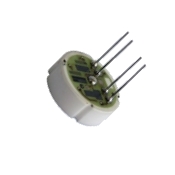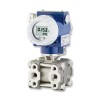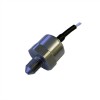When browsing through pressure measurement products you will notice that some of the products are called pressure transducers and others are called pressure transmitters.
 A pressure transducer is any device that fundamentally converts an applied pressure into an electrical signal. There have been many different types of pressure transducer developed over the years such as bonded foil, thick film, thin film, variable capacitance, LVDT & semiconductor strain gauge to name just a few. All of these sensing technologies are used to convert a pressure into a measurable electrical signal.
A pressure transducer is any device that fundamentally converts an applied pressure into an electrical signal. There have been many different types of pressure transducer developed over the years such as bonded foil, thick film, thin film, variable capacitance, LVDT & semiconductor strain gauge to name just a few. All of these sensing technologies are used to convert a pressure into a measurable electrical signal.
Since the transducer core signal varies significantly from one device to another it is often necessary to add some electronic compensation to trim the zero & span offsets and reduce thermal sensitivity over the operating temperature range.
Some pressure transducers are manufactured without any compensation circuitry which are called pressure transducer capsules, modules or headers. These pressure transducer elements and then integrated with electronics by instrument manufacturers to compensate the pressure transducer, and bring the output signal within the design parameters required by the instrumentation specification.
Due to the weak signal generated by the pressure transducer, it is only used over relatively short distances, such as inside a test laboratory or inside some instrumentation. When you want to run the electrical output signal over greater distances, some additional electronics is required to boost the signal. This is when it is necessary to add an amplifier to a pressure transducer to transmit the signal. A pressure transducer which has been combined with an output signal amplifier is typically called a pressure transmitter.
 Many types of amplified signals have been developed over the years as electronics have advanced and power considerations have changed, the most common type are 4-20mA current loop pressure transmitters and amplified voltage output pressure transducers.
Many types of amplified signals have been developed over the years as electronics have advanced and power considerations have changed, the most common type are 4-20mA current loop pressure transmitters and amplified voltage output pressure transducers.
Despite the distinguishing technical differences between a pressure transducer and a pressure transmitter, both have become synonymous with describing any type of pressure sensor, and are often interchanged by different manufacturers. So from a marketing and product naming point of view there is no common distinction between the two types of pressure sensor.
Related Help Guides
- Supply voltage and load resistance considerations for pressure transmitters
- Pressure Sensor Accuracy Specifications
- How to Connect a 4-20mA Current Loop Pressure Transmitter
- What is difference between working, burst and over pressure
- What can a DP sensor be used to measure beyond differential pressure?
Related Technical Terms
- Ceramic Pressure Sensors
- Digital Compensation
- Dry Cell
- Dry/Dry
- HART®
- Isolation Diaphragm
- LVDT – Linear Variable Differential Transformer
- Pressure Sensors
- SOI – Silicon on Insulator
- Stainless Steel Pressure Sensors
- Static Line Pressure
- Wet/Dry
- Wet/Wet
Related Online Tools
- Pressure Transducer Millivolt (mV) Output Calculator
- DP Flow Transmitter Output Calculator
- Pressure Transducer 0-10V Voltage Output Calculator
- Pressure Transducer 0-5V Voltage Output Calculator
- Pressure Transducer 1-5V Voltage Output Calculator
- Pressure Transducer 0.5-4.5V Voltage Output Calculator
- Pressure Sensor Calculator
- Pressure Sensing Errors Calculator
- Pressure Transmitter 0-20mA Current Output Calculator

